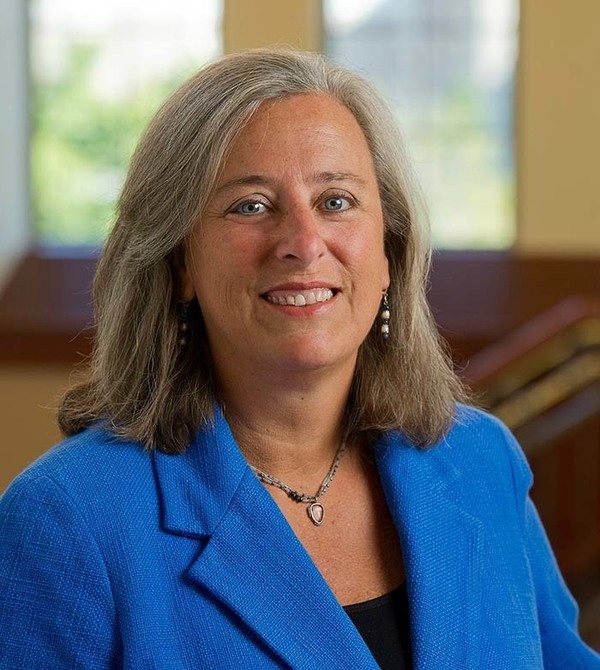For an organization such as the Harper Cancer Research Institute (HCRI), defining our Mission and Vision statements motivates our members to work toward a common set of goals and objectives. Our Mission, to conduct innovative and integrative research to confront the complex challenges of cancer, reflects not just a simple slogan, but rather is a concise definition of the primary goals and objectives of the Institute.

Our Vision statement reflects our aspirational long-term goals for the future, challenges our members and provides a reminder of our values. HCRI’s Vision is to become a globally preeminent cancer research institute that effectively combines research, education and outreach activities to address the major challenges in cancer research, provide training opportunities for the next generation of oncology leaders and serve the greater good in the global community.
When asked to comment on HCRI’s Mission and Vision, Dr. Steven T. Rosen, Chief Scientific Officer of the City of Hope Comprehensive Cancer Center, jokingly stated “I prefer yours to City of Hope’s…. you can quote me!”. Dr. Robert C. Bast, Jr., Vice President for Translational Research at the M.D. Anderson Cancer Center, elaborated “I liked your Mission and Vision statements. ‘Integrative’ research sets you apart and pointing to the ‘complex challenges of cancer’ shows that you appreciate the magnitude of the problem. The Vision places your contributions on a global stage to ‘serve the greater good in the global community’. That sounds like a Vision worthy of Notre Dame.” A similar opinion was voiced by Dr. Dario Altieri, Director of the Wistar Institute Cancer Center, who indicated “Yours [mission and vision] reads great and balances education, research and outreach, in line with the more global mission of the university.” Dr. Altieri provided additional advice “A word about translational research, something that the HCRI does already, would be warranted” as this would enable HCRI to highlight that “the research being done will have tangible and real-life applications.”
From its inception in 2011, the HCRI was intentionally designed to bring together researchers from disciplines in the biological, chemical, physical, and engineering sciences to address cancer-specific problems. The Institute is distinctively focused on attracting scientists from ‘non-traditional’ fields such as engineering, mathematics and physics into cancer research as the unique tools, training, and approaches used by these scientists represent a significant untapped resource for discovery and innovation. Additionally, HCRI motivates talented young scholars in many fields, who may otherwise pursue alternative areas of investigation, to focus their intellectual efforts on cancer-specific research. The end result is an enhanced core of enlightened cancer researchers reflecting the diversity needed to address a problem of this magnitude.
Indeed, the HCRI research model is well-aligned with the National Academies’ focus on interdisciplinary research as “a mode of research by teams or individuals that integrates information, data, techniques, tools, perspectives, concepts, and/or theories from two or more disciplines or bodies of specialized knowledge to advance fundamental understanding or to solve problems whose solutions are beyond the scope of a single discipline or area of research practice" 1. This concept is echoed by the National Cancer Institute’s Collaboration and Team Science Field Guide 2, that concludes “Innovations and advances not possible within one laboratory are emerging from collaborations and research teams that have harnessed techniques, approaches, and perspectives from multiple scientific disciplines and therapeutic areas.” Thus, the HCRI is well-positioned to conduct cancer-focused convergence research, defined by the National Science Foundation as research conducted within a paradigm that “builds upon transdisciplinary approaches to research by intentionally bringing together intellectually diverse scientists and/or engineers at a project’s inception in new collaborations that can generate multiple solutions to complex problems” 3.
The HCRI Mission and Vision statements are an aspirational road map, used to focus and direct our inclusive core of cancer researchers. These living documents will grow and change with us as we continue to attain our goals. As Dr. Gerald Bepler, President of the Barbara Ann Karmanos Cancer Institute, recently affirmed “Our big vision and why we all do what we do is that the end-game is a world free of cancer”. A world free of cancer? Now that’s a goal the HCRI team can fight for!
1 Committee on Facilitating Interdisciplinary Research, Committee on Science, Engineering, and Public Policy (2004). Facilitating interdisciplinary research. National Academies. Washington: National Academy Press, p. 2.
2 National Cancer Institute Collaboration and Team Science Field Guide. L. Michelle Bennett, Howard Gadlin, Christophe Marchand, May 2018. https://www.cancer.gov/about-nci/organization/crs/research-initiatives/team-science-field-guide/collaboration-team-science-guide.pdf
3 NSF 18-058 Dear Colleague Letter: Growing Convergence Research. https://www.nsf.gov/pubs/2018/nsf18058/nsf18058
Originally published by at harpercancer.nd.edu on June 10, 2019.
